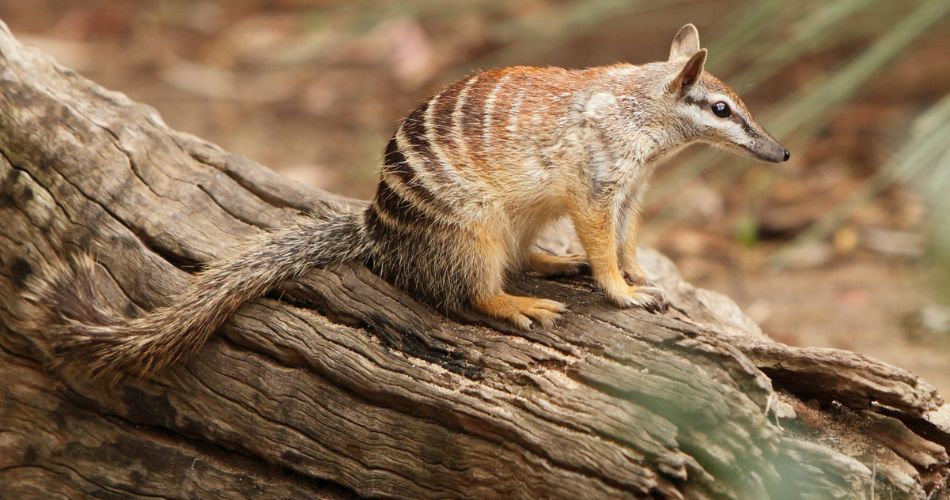World Numbat Day, observed each year on the first Saturday in November, is a day dedicated to raising awareness of the rare and distinctive marsupial known as the numbat (scientific name Myrmecobius fasciatus), and the conservation efforts needed to ensure its survival.
Table of Contents
History of World Numbat Day
The numbat is a unique insect‑eating marsupial native to Australia, once widespread across southern regions but now limited to small pockets in Western Australia and some reintroduced populations elsewhere. Because of its endangered status and special ecological role, a day was designated to focus attention on it. The day, World Numbat Day, was initiated in 2015 by the volunteer organization Project Numbat Inc.
Since then, every first Saturday of November has served as an annual moment for conservation awareness, fundraising, educational efforts, and celebration of this remarkable creature.
Why is World Numbat Day important?
On one level, World Numbat Day is about calling attention to a species that most people have never heard of, yet which embodies both fragility and resilience. The numbat is diurnal (active during the day), specializes in eating termites (up to 20,000 daily), and occupies a niche few other animals fill. 1 Highlighting such an animal helps us appreciate the richness of biodiversity and how even small creatures matter in ecosystems we depend on.
On a deeper level, the day invites reflection on how human actions—ecosystem changes, introduced predators, habitat loss—can push species to the brink, and how concerted efforts (even by volunteers local communities) can make a difference. When you mark World Numbat Day, you’re saying, I recognize that this creature is part of our planet’s story—and I’m willing to act. Some personal, human‑scale reasons the day matters:
- It gives voice to a species that would otherwise remain out of sight and out of mind.
- It reminds us that conservation isn’t just about the big, charismatic animals—it’s also about the little, specialized ones.
- It connects us to our broader responsibilities: how we share the planet with other living beings.
- It offers a chance for a community to rally around hope and positive action rather than just loss.
- It helps build the habit of noticing nature’s details—the stripes on a numbat’s back, the sticky tongue, the termite mound—and through that noticing, caring.
Interesting facts about the numbat

- The numbat is the faunal emblem of the state of Western Australia.
- The numbat’s scientific name is Myrmecobius fasciatus.
- Unlike most marsupials, the numbat is diurnal (active during the day).
- It is the only member of its family (Myrmecobiidae) in the order Dasyuromorphia (Australian carnivorous marsupials).
- Its diet consists almost exclusively of termites. An adult may eat up to 15,000–20,000 termites per day. 2
- It uses a long, sticky tongue and strong front claws to dig into loose soil and catch termites.
- The numbat has distinctive coloring: reddish-brown to greyish fur, a black stripe from muzzle through eye, and 4–11 white transverse stripes on its hindquarters.
- Female numbats do not have a pouch (which is unusual for marsupials). They typically give birth to four young.
- The species is listed as Endangered on the IUCN Red List due to habitat loss and predation by introduced species (like foxes and feral cats).
- Historically, numbats ranged across southern Australia, but today they survive in the wild only in small pockets in Western Australia (and in reintroduction sites).
How to Celebrate or Observe World Numbat Day
Celebrating World Numbat Day doesn’t require travel to Australia or major planning—it can be simple, meaningful, and locally relevant. First, consider learning: look up the numbat, its habits, why it’s threatened, and share what you find with friends or family. That awareness alone helps. Then you can take a small action: donate to or support a conservation group working on numbats or similar species, share a social media post using hashtags like #WorldNumbatDay, or even host a small talk or classroom activity about Australia’s wildlife and what we can do.
You could also translate the spirit of the day into everyday life: think about habitat protection in your own locale, predator control, invasive species issues, or how specialized species struggle when their food source or homes change. Invite a friend to “adopt” awareness for a little‑known species too. Some simple ideas:
- Read an article or watch a short video on the numbat and its conservation, then share the key fact you learned.
- Post a photo or illustration of a numbat on social media with a note: “Today I learned about…”.
- Make a small donation to a wildlife conservation program (for numbats or threatened species generally).
- If you’re in a school or community group, organize a “stripe‑and‑say” day when everyone wears something striped (in tribute to the numbat’s coat) and talks about endangered species.
- Switch off one electronic device today for an hour and instead go outside for a walk or find a local nature reserve—use that time to reflect on the wild places that need protection.
World Numbat Day Dates Table
| Year | Date | Day |
|---|---|---|
| 2025 | November 1 | Saturday |
| 2026 | November 7 | Saturday |
| 2027 | November 6 | Saturday |
| 2028 | November 4 | Saturday |
| 2029 | November 3 | Saturday |
- https://www.australianenvironmentaleducation.com.au/australian-animals/numbat-maze/[↩]
- https://wwf.org.au/what-we-do/species/numbat/[↩]
Subscribe to our newsletter and never miss a holiday again!

